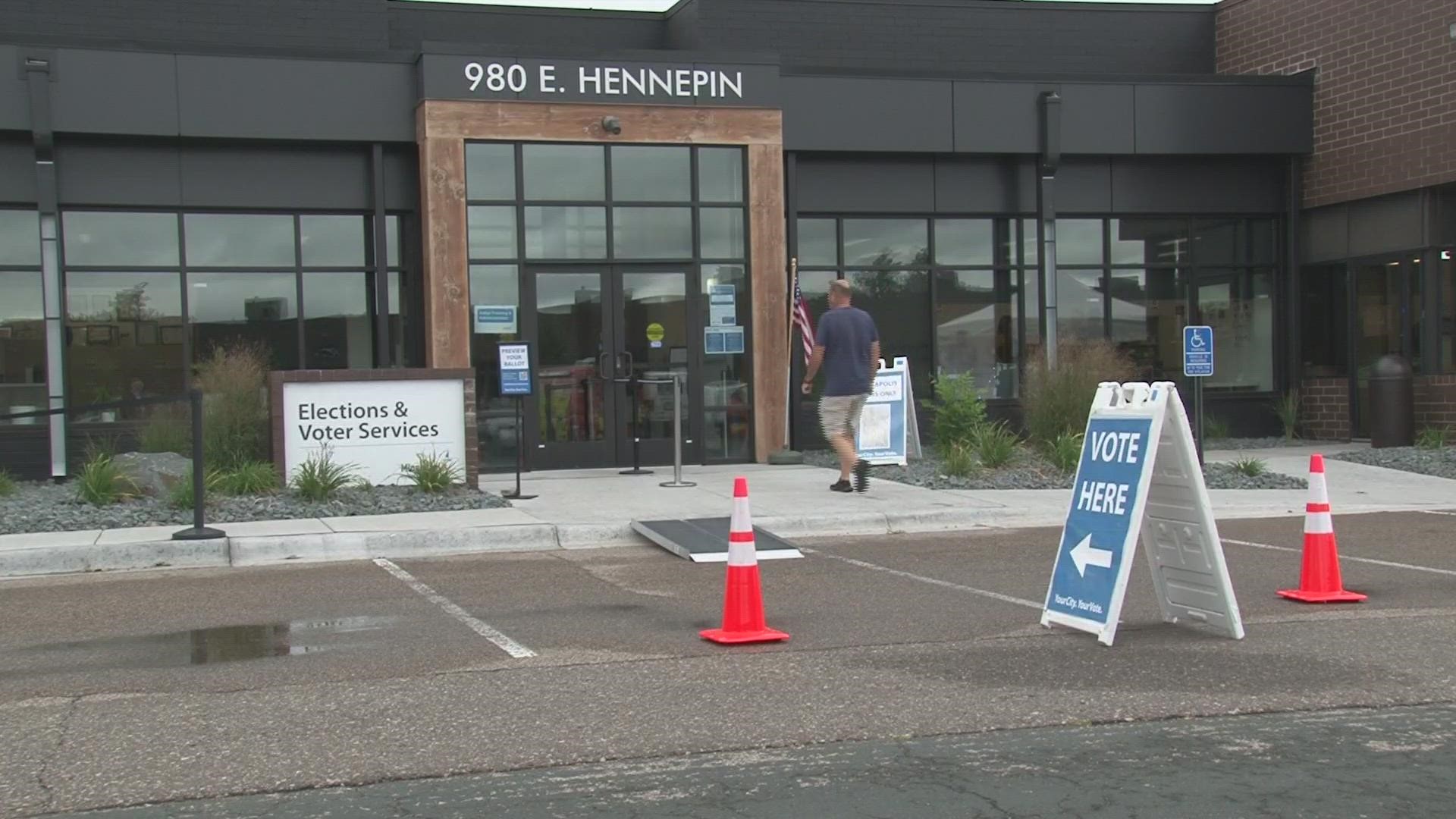MINNEAPOLIS — For some, election day is right now. Early voting began across Minnesota Friday.
At the Minneapolis Elections Center on East Hennepin Avenue people were starting to drop in and exercise their constitutional rights six weeks before the big day.
"You can come in person to vote early at our location, or downtown at Hennepin County. Or you can apply to vote by mail as well," Jeff Narabrook of Minneapolis Elections and Voter Services told KARE 11.
"Check our hours before you come. We increase hours as we get closer to the election."
Minnesota doesn't have early voting in the traditional sense. What people are doing is essentially requesting absentee ballots in person, filling them out on the spot and handing them in right there, rather than doing it all by mail.
The ballots remain inside the absentee envelopes and are sealed inside vaults. They won't be opened and fed into machines until right before the election. The results of those early ballots won't be known until all the in-person voting results arrive.
You can track the status of your mail-in absentee ballot through the Minnesota Secretary of State's ballot tracking web tool. It tells you the status of your ballot envelope, which remains sealed.
At 46 days, Minnesota has one of the longest early voting windows in the nation and in the upper Midwest as well, according to a list compiled by the National Conference of State Legislatures. Wisconsin, for example, starts early voting only 14 days before the election. North Dakota is at 15 days, Iowa at 20 days. South Dakota, on the other hand, is at 46 days like Minnesota.
Too early?
Some, including Republican Secretary of State candidate Kim Crockett, assert that 46 days it's too long.
"It's not voting anymore when it's a six-week process and we've created this huge centralized system. We've removed some safeguards," Crockett told KARE 11.
"There's got to be a way to get ballots to people who are overseas and get them back. I’m confident that could be done without changing the whole system and the timing here."
On the other side of the spectrum were the DFL candidates who gathered Friday afternoon in Saint Paul to celebrate Minnesota's early voting window. They argued that the long early voting window gives more working people more opportunities to vote and increasing access to the voting process should be a core American value.
“Today is election day, and tomorrow is election day, and the day after that and the day after that,” Lieutenant Governor Peggy Flanagan told fellow Democrats. "So, it is on! In making sure we are turning out the vote. But we're also having conversation with folks across the state.”
Early voting changes
Minnesota's current early voting system is a fairly recent phenomenon. It was 2010 when then-Governor Tim Pawlenty signed the bill expanding the window from 30 days to 46 days.
That legislation was in response to a national effort by the U.S. Department of Defense to give overseas voters, especially members of the military, more time to request and receive absentee ballots.
In 2013, then-Governor Mark Dayton signed the bill allowing no-excuse absentee voting in Minnesota. Until then, voters had to attest to the fact they were too ill to vote in person or would be out of the state on the day of the election.
In the 2020 election cycle, some of the rules for absentee ballots were changed temporarily due to the COVID pandemic. The requirement for a witness's signature on the outer absentee ballot envelope was waived and ballots postmarked on or before election day could be counted if they arrived up to seven days after the election.
For the 2022 election, Minnesota has gone back to the pre-pandemic rules. Absentee ballots must have a signature from a witness who is also a registered Minnesota voter or be notarized by a notary public. Ballots will only be counted if they arrive on or before election day.
Ballot security
According to Jon Martin with Minneapolis Elections and Voting Services, the outer envelopes for mail-in ballots are stamped with the date they’re received. The Absentee Ballot Board inspects the voter’s signature envelope to decide if it can be accepted or rejected.
Rejected ballots will remain sealed while the voter is notified and given the chance to vote again, either absentee or in person.
The accepted ballots are stored in the ballot vault until they can be opened and fed into the tabulator machine, a process that starts seven days before election day at 5:00 p.m.
Traditionally the ballot boards were composed of equal numbers of Republicans and Democrats. But in some jurisdictions, there aren’t enough people of both parties willing to participate on those ballot boards. In those cases, city and county elections workers can be deputized as deputy elections clerks and serve on the ballot board.
There are pending lawsuits that would end the practice of allowing professional staff to decide if ballots can be accepted.
Watch more Minnesota politics:
Watch the latest political coverage from the Land of 10,000 Lakes in our YouTube playlist:

